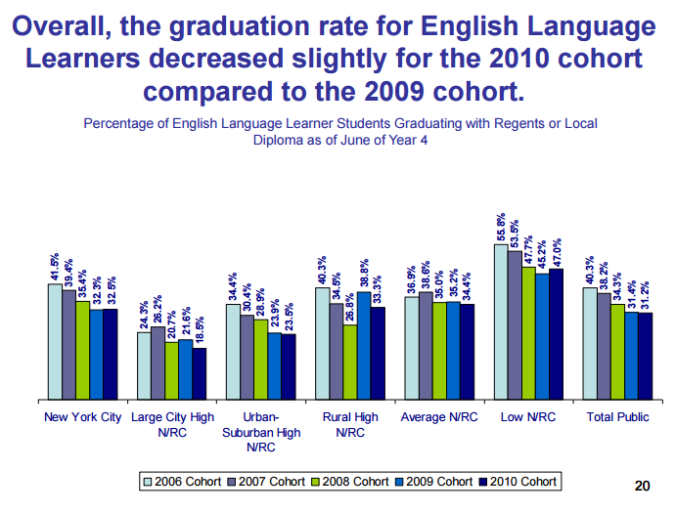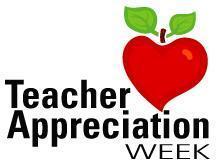 Projections indicate that by 2020, 1 in 4 students in U.S. classrooms will be non-native English speakers. In fact, the population of English Language Learner (ELLs – a student whose primary language is not English) is growing by 10% annually, making these students one of the fastest growing populations in education. Because of this rapid growth, and the unique challenges facing these students, demand for teachers who are equipped with the skills to teach these students is greater now than ever before.
Projections indicate that by 2020, 1 in 4 students in U.S. classrooms will be non-native English speakers. In fact, the population of English Language Learner (ELLs – a student whose primary language is not English) is growing by 10% annually, making these students one of the fastest growing populations in education. Because of this rapid growth, and the unique challenges facing these students, demand for teachers who are equipped with the skills to teach these students is greater now than ever before.
Recently, reported graduation rates reveal a shocking truth; over a five year period from 2006 to 2010, the percentage of ELLs who graduated from NYS public high schools steadily decreased from 40.3% in 2006 to 31.2% in 2010. Compared to 76.4% of all other students attending public high schools in NYS who graduated in 2010, the abysmal graduation rate for ELLs in the same year raised a red flag for English as a Second Language (ESL) educators.

Source: http://www.p12.nysed.gov/irs/pressRelease/20141218/2010-CohortGradRate-12-17-14.pdf
The New York State Board of Regents has responded to these issues, approving changes to the legal requirements for educating ELLs in New York State. These amendments were adopted in September of 2014, and constitute the first updates of this kind in 30 years. The modifications respond to the growing multilingual population and were designed to strengthen identification and placement procedures as well as support services for ELLs, improve transparency and communication between school districts and parents of ELLs, and increase emphasis on professional development related to Teaching English as a Second Language (TESOL).
In addition to these amendments, the updates also call for a decrease in class size for ESL instruction and an increase in qualified personnel in these classrooms. When the amendments formally took effect at the start of the 2015-2016 school year, we immediately noticed the growing demand for ESL teachers in light of these new regulations. Candidates in our TESOL programs were landing jobs even before they had graduated…and this trend has continued! In fact, a special report by New York State School Boards Association Department of Legal & Policy Services has predicted that school districts will need to quickly initiate recruitment efforts for additional staff in this area and these efforts may be impeded by the limited number of teachers qualified to work with ELLs.
According to the NY State Board of Regents, only 500 initial TESOL certificates were granted to teacher candidates in the 2013-2014 academic year. This is particularly problematic because low numbers of certified teachers threaten the quality of education for ELLs, leading to the subpar graduation rates we are seeing. However, on the bright side, the shortage also means that jobs for teachers with TESOL degrees are readily available. Niagara University’s undergraduate and graduate degrees in TESOL prepare students to succeed as effective ESL instructors and meet the needs of English Language Learners.

Percentage of public school students who are English language learners, by state: School year 2012–13
Source: U.S. Department of Education, National Center for Education Statistics, Common Core of Data (CCD), “Local Education Agency Universe Survey,” 2012–13. See Digest of Education Statistics 2014, table 204.20.
Our TESOL graduates are well-prepared to take advantage of teaching opportunities at the state, national, and international levels. Students who teach English abroad have the chance to explore new cultures and learn about the different values and attitudes of people all over the world. One of our faculty members, Dr. Michael Smith, an associate professor of education, has been developing an international network for NU students, establishing student-teaching placements in Bankok, Thailand and maintaining partnerships with schools and universities in Australia, China, Japan, and Southeast Asia. Students who have taught in Thailand refer to the experience as “life changing” (to read more about Dr. Smith’s work and his students’ experiences abroad, check out his recent blog post here).
While teaching English abroad may appeal more to the adventurous sort, all individuals interested in careers in TESOL will engage in rich multicultural experiences, whether across the globe or in a school in their own neighborhood. Social integration and language acquisition for K-12 students is a multidimensional and often intimidating process, and accordingly, ELL’s often feel self-conscious and may experience confusion and frustration in school and in the community. Identifying and addressing these unique needs of diverse ELL’s and understanding the countless social and cultural factors impacting language comprehension and academic success are integral to the work ESL teachers do; they are both educators and advocates for their students. In fact, an ESL teacher’s capacity for empathy is among the most valuable qualities we should look for if we are hoping to impact student engagement and success.
Initially, many will dismiss the idea of becoming an ESL teacher as they fear what they believe to be the prerequisite language and/or cultural abilities one must have to pursue certification in this field. One of the common misconceptions is that those interested in pursuing the degree must be bilingual or that teacher candidates must become fluent in one or more other languages. However, this is not the case – TESOL teachers will become experts in facilitating students’ acquisition of English language and cultural skills; they are not required to be fluent in the any of the different languages students may speak.
While there is no fluency requirement for TESOL programs, New York state requires that TESOL teachers complete 12 credit hours (4 courses) of study in languages other than English in order to acquire an authentic understanding of linguistics and the ways in which we acquire languages, to become more familiar with diverse cultures, and to better understand the considerations for teaching ELLs. TESOL candidates are able to select from language courses as diverse and wide-ranging as the students they will soon be teaching; a four-course study of one language in particular is not required, students can take one or more courses in a variety of languages. This is reflective of the diversity in schools today. In fact, New York State public schools alone serve over 200,000 English Language Learners who speak over 160 languages.

NU offers several options for TESOL preparation, both at the undergraduate and graduate levels. Our programs prepare teacher candidates to effectively teach English to speakers of other languages locally, nationally, and abroad. At the undergraduate level, students can choose to study TESOL and childhood education (grades 1-6) or TESOL and adolescent education (grades 7-12, subject-specific). Graduate students who currently hold teacher certification in NYS can apply for our 37-credit hour master’s degree program, while those seeking initial teaching certification are eligible to apply for our 46-credit hour master’s degree program. Practicing teachers who wish to extend their certification to TESOL can enroll in an 18-credit hour program leading to a Certificate of Advanced Studies in TESOL. With all of these options and a clear indication that jobs for ESL teachers are on the rise, why not choose TESOL?










 By Dr. Debra Colley
By Dr. Debra Colley From these experiences, challenges and responsibilities will emerge as well. No one has said that this commitment to serving those most in need would be easy. They have said it must be done; we must regard aid to the poorest and most vulnerable in our world as a fundamental duty. We will bring our experiences to the question of how it must be done. Our mission calls on us to strive for innovation and excellence in the work we do as advocates for those in need and to support the development of programs and strategies that will make a difference in local communities and the larger world. Let’s, therefore, extend our experiences – domestic and global – in a strategic way so that actions emerge and we develop the persistence to stay the course and truly make a difference in our world.
From these experiences, challenges and responsibilities will emerge as well. No one has said that this commitment to serving those most in need would be easy. They have said it must be done; we must regard aid to the poorest and most vulnerable in our world as a fundamental duty. We will bring our experiences to the question of how it must be done. Our mission calls on us to strive for innovation and excellence in the work we do as advocates for those in need and to support the development of programs and strategies that will make a difference in local communities and the larger world. Let’s, therefore, extend our experiences – domestic and global – in a strategic way so that actions emerge and we develop the persistence to stay the course and truly make a difference in our world.
 Our journey in France allowed us to walk through cities where these questions began to unfold in the life of St. Vincent de Paul. We gathered in Folleville realizing that we would not have our community of Vincentians had it not been for the history of all that transpired in that town – the question of “
Our journey in France allowed us to walk through cities where these questions began to unfold in the life of St. Vincent de Paul. We gathered in Folleville realizing that we would not have our community of Vincentians had it not been for the history of all that transpired in that town – the question of “ We walked the path in Chatillon-sur-Chalaronne where the townspeople came to assist a neighbor in need – with so much food, St. Vincent knew that we needed to organize the great charity of people – “
We walked the path in Chatillon-sur-Chalaronne where the townspeople came to assist a neighbor in need – with so much food, St. Vincent knew that we needed to organize the great charity of people – “
 Our journey continues; however, I am struck by the relevance of these two questions (what must be done and how should it be done) in our leadership and in the issues facing our schools, families, and communities. My question becomes …
Our journey continues; however, I am struck by the relevance of these two questions (what must be done and how should it be done) in our leadership and in the issues facing our schools, families, and communities. My question becomes …